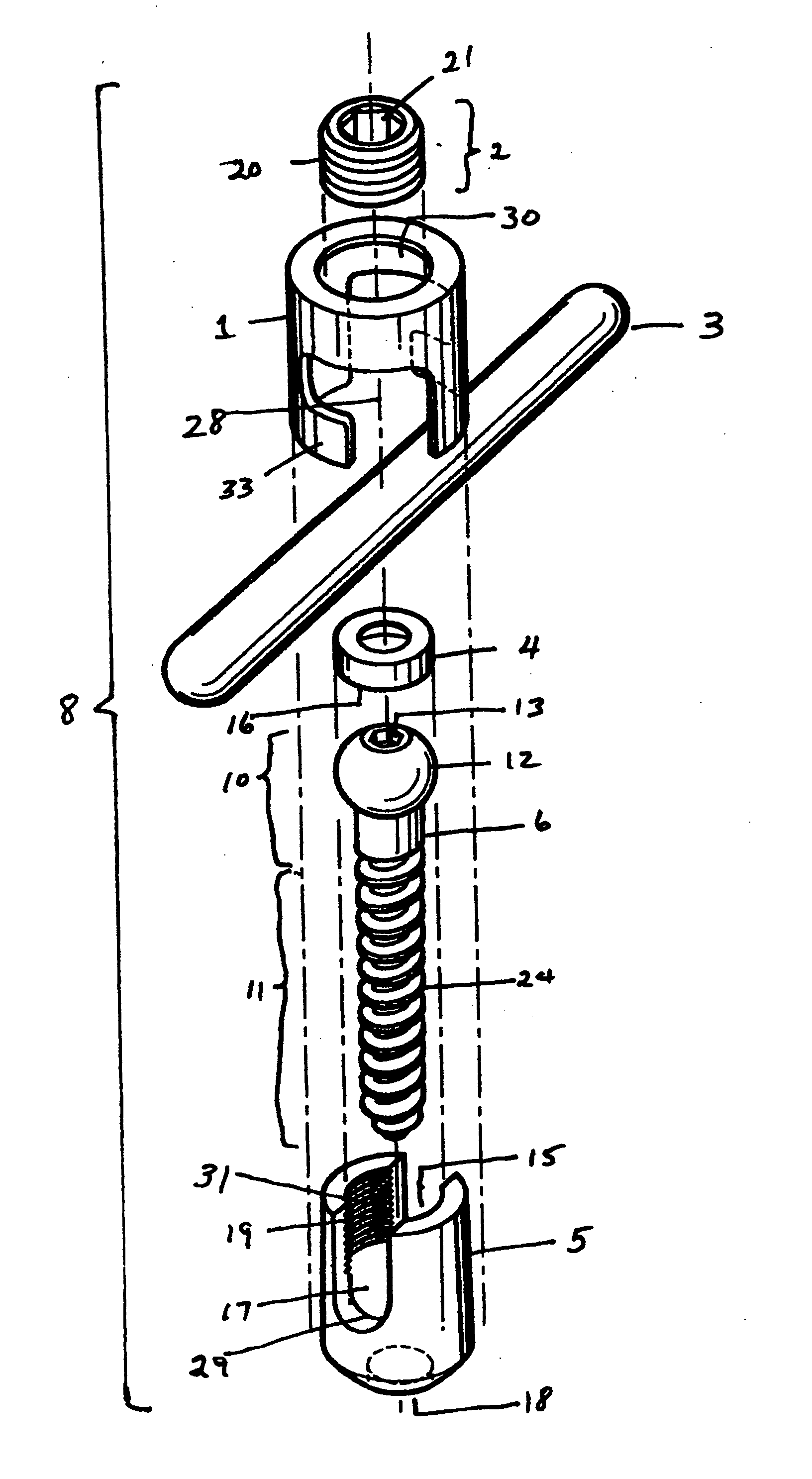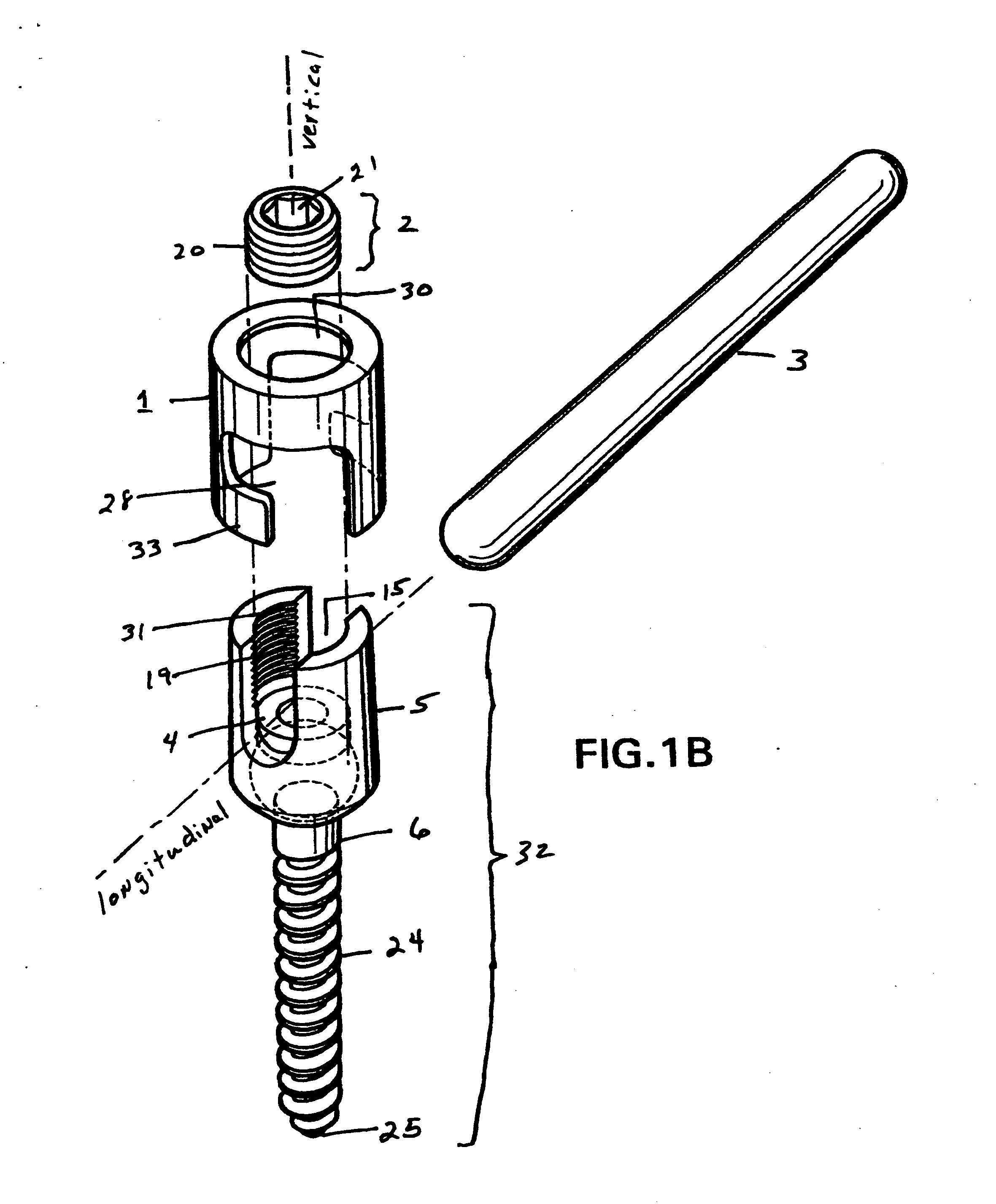Device for securing spinal rods
a technology of spinal cord and rod body, which is applied in the field of connecting spinal cord devices, to achieve the effects of convenient and accurate determination, rapid assembly, and streamline surgical procedures
- Summary
- Abstract
- Description
- Claims
- Application Information
AI Technical Summary
Benefits of technology
Problems solved by technology
Method used
Image
Examples
Embodiment Construction
[0031] The present invention's method and device allow a surgeon to determine the alignment and to ensure the alignment of the spinal rod with respect to the pedicle screw assemblies 8, as shown in FIGS. 3 and 12, before finally fixing the pedicle screws into the vertebral bodies. The alignment of the spinal rod is assisted by the locking cap 1. If the spinal rod is not aligned, the locking cap will not lock, this will alert the surgeon to readjust the position or location of one or more pedicle screw assemblies, or to remove the spinal rod and bend it, and to re-insert it and re-test for alignment using the locking cap 1. The locking cap 1 also ensures that the spinal rod remains aligned in vivo after surgery (see FIGS. 11 and 12). Further details are discussed below.
[0032] As shown in the FIGS. 11 and 12, one embodiment of the present invention is a spinal fixation system 7 comprising two or more pedicle screw assemblies 8, which immobilizes and stabilizes vertebral bodies. The p...
PUM
 Login to View More
Login to View More Abstract
Description
Claims
Application Information
 Login to View More
Login to View More - R&D
- Intellectual Property
- Life Sciences
- Materials
- Tech Scout
- Unparalleled Data Quality
- Higher Quality Content
- 60% Fewer Hallucinations
Browse by: Latest US Patents, China's latest patents, Technical Efficacy Thesaurus, Application Domain, Technology Topic, Popular Technical Reports.
© 2025 PatSnap. All rights reserved.Legal|Privacy policy|Modern Slavery Act Transparency Statement|Sitemap|About US| Contact US: help@patsnap.com



